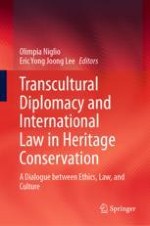2021 | OriginalPaper | Buchkapitel
Jitiya: Tharu Inherence to Eco-Culture
verfasst von : Keshav Raj Chalise
Erschienen in: Transcultural Diplomacy and International Law in Heritage Conservation
Verlag: Springer Singapore
Aktivieren Sie unsere intelligente Suche, um passende Fachinhalte oder Patente zu finden.
Wählen Sie Textabschnitte aus um mit Künstlicher Intelligenz passenden Patente zu finden. powered by
Markieren Sie Textabschnitte, um KI-gestützt weitere passende Inhalte zu finden. powered by
